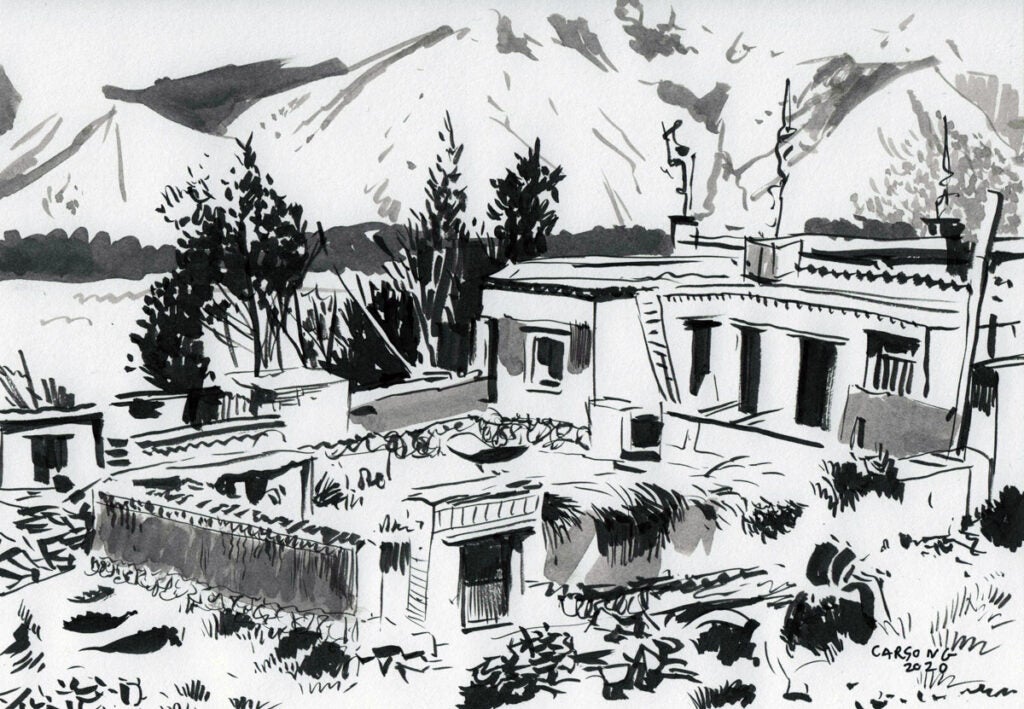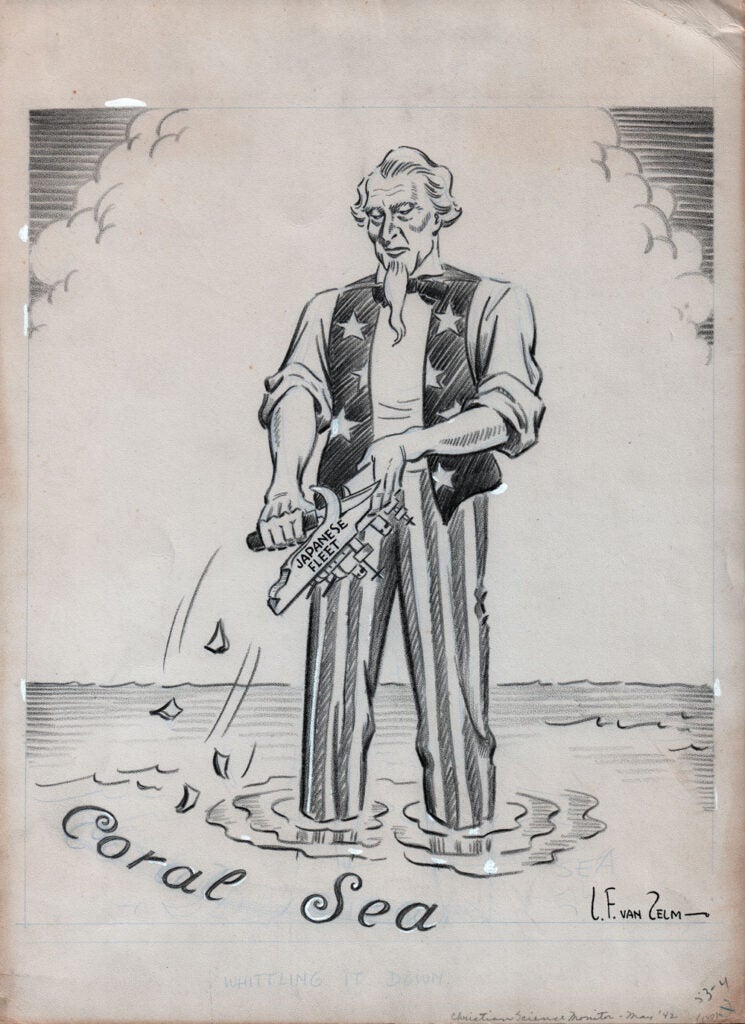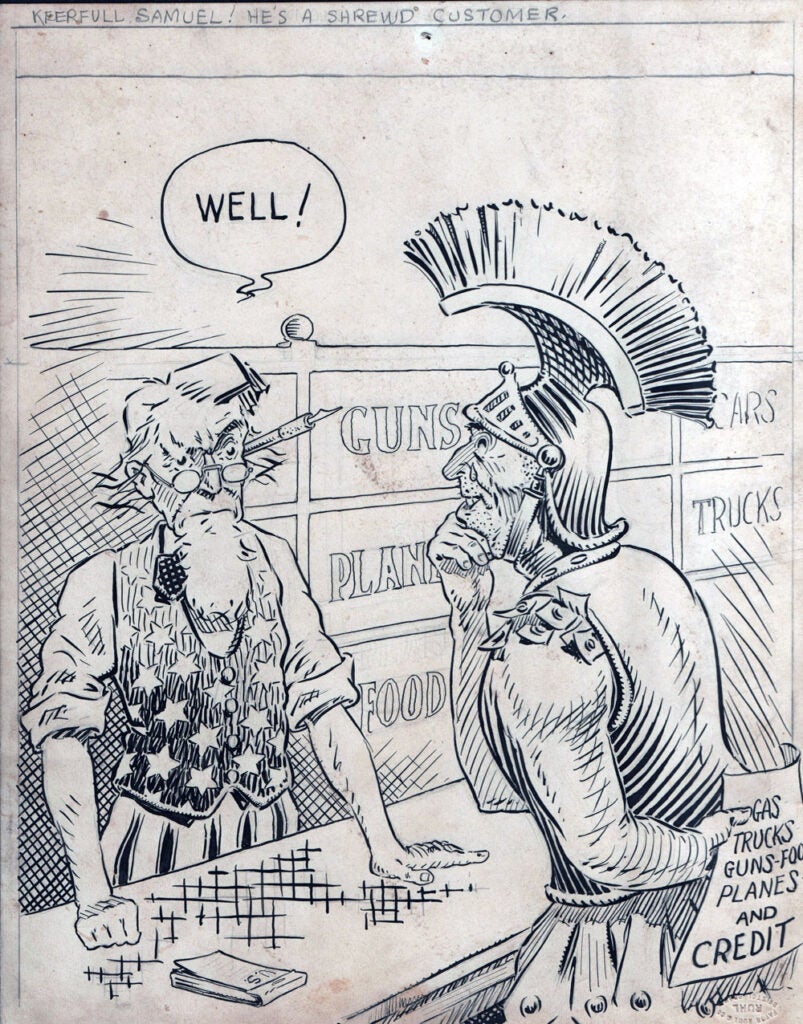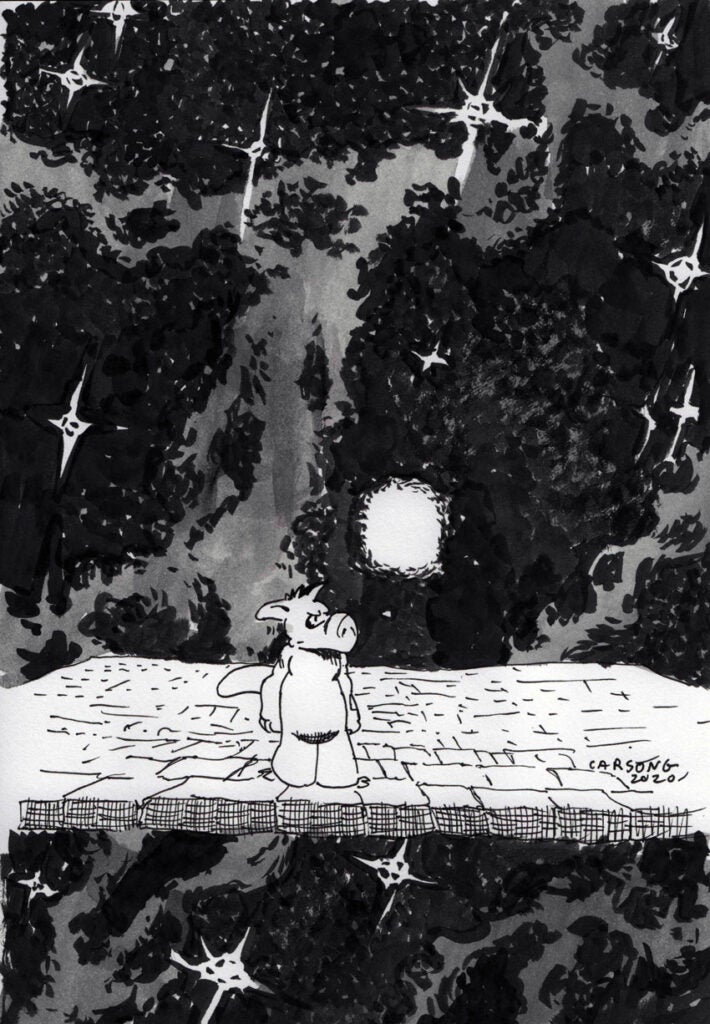“Fantastic Four 3 Cover 1962” (2020)
by Carson Grubaugh (1981- )
7 x 10 in., ink on paper
Coppola Collection

The kickstarter for “You Don’t Know… Jack,” closes on August 14, 2020, 9 PM. Artist Carson Grubaugh, a terrific master of brushwork, is also selling his original art from the book – you can customize your own tier with it.
He’s also offering original 7 x 10 inch straight-to-ink Google-Image Grab-Bag sketches. You are asked to provide a word or phrase (and obviously you can game this). Carson then searches this word or phrase using Google Images. The first photographic image listed by Google Images will be the source material for the straight-to-ink sketch. He’s got a great eye. In fact, it freaks me out. He can use a brush on paper with no underlying outline, and in about 20-30 minutes he produces a sketch. And all without training wheels! He records it live. The first one is $100 and all the next ones are $70. I am getting 7 of them to support the cause, plus I think they are cool to get along with the videos.
I wanted some comics-related stuff, and I argued that a photo of a comic cover was, indeed, a photo, under the ground rules of the grab-bag scheme. Thanks to Carson for being a good sport about it.
You can see the sped-up and real-time videos for this one, which is “Fantastic Four 3 Cover 1962,” which (for him) picked up a slabbed copy, under the “updates” section, along with many other examples. I have three other comic covers being done this way.
www.kickstarter.com/projects/1349357665/you-dont-know-jack










